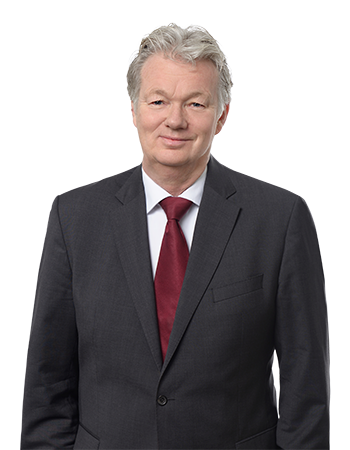Power Plant Safety Act and Future Electricity Market Design – Current Status
Germany plans to build up to 20 GW of gas-fired power plant capacity by 2030 to secure its energy needs.
Relevant stakeholders have been aware for years that Germany will face an increased need for dispatchable power plant capacity by the 2030s at the latest, partly due to the phase-out of nuclear power and coal-fired generation. The exact requirement, however, is a matter of debate; depending on the scenario analysis, it is expected to range between 20 and 40 GW of additional power plant capacity.¹
In August 2023, the Federal Ministry for Economic Affairs and Climate Protection (BMWK) announced that it had reached an understanding with the European Commission on state aid issues. This agreement would allow for staggered, technology-specific tenders for hydrogen “sprinter” power plants, hydrogen hybrid power plants, and H2-ready natural gas-fired power plants with a mandatory switch to hydrogen operation, totaling up to 23.8 GW.² The ministry was working on a corresponding draft regulation; however, the launch of the consultation or the publication of a draft was delayed for a long time.
Following the Federal Constitutional Court’s ruling declaring the transfer of coronavirus credit authorizations to the Climate and Transformation Fund (KTF) unconstitutional, implementation stalled due to renewed turbulence in budget planning.
In September 2024, the consultation process finally began for the bill—now renamed the “Power Plant Safety Act (“Kraftwerkssicherheitsgesetz”) —with a reduced tender volume of 12.5 GW. At the same time, a plan was presented to transition towards a technology-neutral capacity mechanism. There was brief hope for a parliamentary compromise, but this ultimately failed in December 2024. Notable legal features of the draft included the proposed state-aid-based division of the 12.5 GW capacity under the Guidelines on State Aid for Climate, Environmental Protection and Energy (CEEAG)³ into two components: 7.5 GW as a decarbonization measure and 5 GW as a measure to ensure security of supply. The draft also stipulated a binding date for conversion to 100% hydrogen operation.⁴
The new federal government revived these ideas in its coalition agreement, setting the goal of incentivizing the construction of up to 20 GW of gas-fired capacity by 2030, regardless of the technology used.⁵ Existing power plant sites are to be prioritized, with regional steering based on demand. At the same time, a technology-neutral and market-based capacity mechanism is intended to foster a “system-friendly technology mix.”
As political discussions and decisions on the future electricity market design continue, the federal government has now announced plans to launch “fast-track” technology-specific tenders for pure gas-fired power plants totaling up to 10 GW before the end of this year (or early 2026).⁶ However, the negotiations with the European Commission on this matter apparently continue and have so far prevented the (state aid) legally required consultation process from taking place.
If the technology-specific tender proceeds this year, the further development of incentivized capacity will largely depend on the establishment of a politically unified electricity market design that is approved by the European Commission.
In the recently published monitoring report marking the start of the 21st legislative period (“Monitoringbericht zum Start der 21. Legislaturperiode”), the Institute of Energy Economics (EWI) at the University of Cologne and the Consultancy for Energy Industry Transformation (BET), commissioned by the Federal Ministry for Economic Affairs and Energy (BMWE), outlined possible concepts for introducing a capacity market and implementing the power plant strategy.⁷ The report identifies the following models as conceivable:
- Central Capacity Mechanism: A central authority defines the necessary capacity requirements; the total requirement is tendered through long-term auctions, providing incentives for long-term investment decisions.
- Decentralized Capacity Market: Obligates Balance Responsible Party (BRP) to secure deliveries by maintaining capacities—typically via prequalified certificates; penalties apply for non-compliance.
- Combined Capacity Market: Combines a central tender for capacity provision with decentralized hedging obligations; a central body determines the overall demand, while BRPs are required to secure capacity at the decentralized level.
- Mandatory Peak Price Hedging: Requires BRPs to hedge against high electricity prices and potential shortages through hedging products, potentially involving banks or insurers as counterparties.
- Short-Term, Technology-Specific Tenders: The initial mode of operation of the power plant strategy, in which capacity expansion is incentivized through technology-specific tenders.
Statements by the Federal Minister for Economic Affairs suggest that the ministry currently favors a central capacity mechanism modeled on the Belgian system, at least initially.⁸
Introduced in Belgium in response to the nuclear phase-out and concurrent decommissioning of neighboring power plants, this model assigns the transmission system operator the responsibility for determining capacity requirements and sets price caps for existing facilities. In addition, it includes so-called reliability options, which grant the capacity provider a compensation claim when the day-ahead electricity price falls below a defined threshold, and, conversely, oblige them to repay the difference when the price exceeds this threshold.⁹
Adopting the Belgian model would likely accelerate the legislative process, since European Commission approval for any electricity market design is far from automatic—and the Belgian system has already been reviewed under EU law. Moreover, a central capacity mechanism offers investment security, which is an important incentive given the substantial capital requirements for the construction of new power plants, and is therefore likely to best suit the current German market situation.
However, criticism is growing, particularly concerning the potentially high costs of a central capacity mechanism.¹⁰ A legal opinion commissioned by Deutsche Umwelthilfe (DUH, German Environmental Aid) also questions its compatibility with state aid law.¹¹
Further developments regarding the tender and electricity market design remain to be seen. We will continue to keep you informed on this matter at the appropriate time.
¹ Federal Ministry for Economic Affairs and Climate Action (BMWK), Security of Electricity Supply: Report 2025, https://www.bundeswirtschaftsministerium.de/Redaktion/DE/Publikationen/Energie/versorgungssicherheit-strom-bericht-2025.html (accessed October 19, 2025).
² Federal Ministry for Economic Affairs and Climate Action (BMWK), “Framework for the Power Plant Strategy Is in Place,” press release, August 1, 2023, https://www.bundeswirtschaftsministerium.de/Redaktion/DE/Pressemitteilungen/2023/08/20230801-rahmen-fuer-die-kraftwerksstrategie-steht.html (accessed October 16, 2025).
³ https://eur-lex.europa.eu/EN/legal-content/summary/2022-guidelines-on-state-aid-for-climate-environmental-protection-and-energy.html
⁴ Federal Ministry for Economic Affairs and Climate Action (BMWK), Power Plant Security Act – Hydrogen-Capable Gas Turbines, brochure / downloadable document, https://www.bundeswirtschaftsministerium.de/Redaktion/DE/Downloads/Energie/kraftwerkssicherheitsgesetz-wasserstofffaehige-gaskraftwerke.pdf?__blob=publicationFile&v=6 (accessed October 16, 2025).
⁵ CDU, CSU and SPD, Koalitionsvertrag zwischen CDU, CSU und SPD – Verantwortung für Deutschland, 21. Legislaturperiode [Coalition Agreement between CDU, CSU and SPD – Responsibility for Germany, 21st Legislative Period], 2025, https://www.koalitionsvertrag2025.de/sites/www.koalitionsvertrag2025.de/files/koav_2025.pdf (accessed October 16, 2025).
⁶ MEGA Monheim, “Power-Plant Rapid Launch to Begin with 5 to 10 GW,” company news, June 4, 2025, https://www.mega-monheim.de/unternehmen/aktuelles/kraftwerks-schnellboot-soll-mit-5-bis-10-gw-starten (accessed October 16, 2025).
⁷ Federal Ministry for Economic Affairs and Climate Action (BMWK), Energiewende effizient machen [Making the Energy Transition Efficient], https://www.bundeswirtschaftsministerium.de/Redaktion/DE/Publikationen/Energie/energiewende-effizient-machen.html (accessed October 16, 2025).
⁸ MEGA Monheim, “Power-Plant Rapid Launch to Begin with 5 to 10 GW,” company news, June 4, 2025, https://www.mega-monheim.de/unternehmen/aktuelles/kraftwerks-schnellboot-soll-mit-5-bis-10-gw-starten (accessed October 16, 2025).
⁹ enervis energy advisors GmbH, Market Design for a Secure, Economic and Decarbonized Electricity Market (commissioned by Zukunft Gas, December 6, 2022), https://enervis.de/wp-content/uploads/2022/12/2022_Marktdesign-Strommarkt_Studie-Zukunft-Gas.pdf (accessed October 16, 2025).
¹⁰ Marian Willuhn, “BNE Analysis on the Capacity Market: €435 Billion Burden for Consumers and Industry,” pv magazine Deutschland, October 2, 2025, https://www.pv-magazine.de/2025/10/02/bne-analyse-zum-kapazitaetsmarkt-435-milliarden-euro-belastung-fuer-verbraucher-und-industrie/ (accessed October 16, 2025).
¹¹ Dr. Annette Mutschler-Siebert, Marion Baumann & Tobias Schneider, Memo: Review of the State Aid Admissibility of the German Government’s Planned Support for New Gas Power Plants (Deutsche Umwelthilfe e.V., October 6, 2025), https://www.duh.de/fileadmin/user_upload/download/Pressemitteilungen/Energie/Thema_Gas/Memo_Geplante_F%C3%B6rderung_von_Gaskraftwerken_KLG_final.pdf (accessed October 16, 2025).





